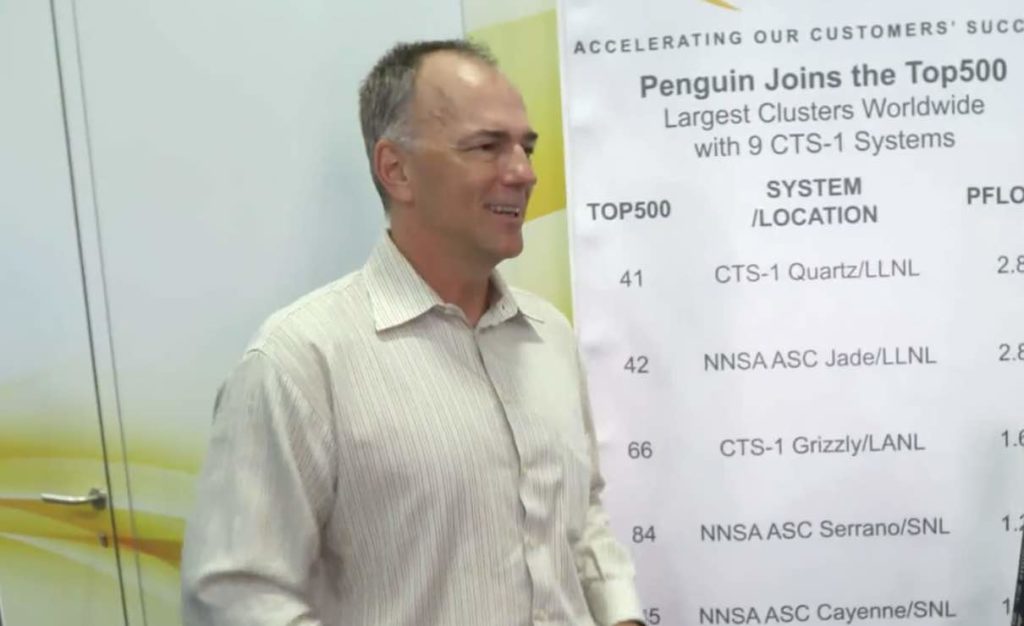 In this video from SC16, Dan Dowling from Penguin Computing describes the company’s momentum with Nine CTS-1 supercomputers on the TOP500. With innovative liquid cooling from Asetek, Penguin is taking the Open Compute Project form factor to new heights in high performance computing.
In this video from SC16, Dan Dowling from Penguin Computing describes the company’s momentum with Nine CTS-1 supercomputers on the TOP500. With innovative liquid cooling from Asetek, Penguin is taking the Open Compute Project form factor to new heights in high performance computing.
“Our Tundra Extreme Scale Series takes Open Compute into the rarified air of HPC’s highest levels of performance,” said Sid Mair, Senior Vice President, Federal Systems Division, Penguin Computing. “Having nine systems in the TOP500 demonstrates that our Open Compute solution is scaling comparably to proprietary systems.”
Two Penguin Computing systems, Quartz and Jade, are ranked 41st and 42nd respectively, and five additional systems are in the TOP100. Two other Penguin Computing systems are in the TOP200. The nine systems delivered to Lawrence Livermore (LLNL), Los Alamos (LANL) and Sandia (SNL) national labs are in order of performance: Quartz – 2.8 PFLOPS (Location: LLNL); ASC Jade – 2.8 PFLOPS (LLNL); Grizzly – 1.6 PFLOPS (LANL); ASC Ice – 1.2 PFLOPS (LANL); ASC Fire – 1.2 PFLOPS (LANL); ASC Serrano – 1.2 PFLOPS (SNL); ASC Cayenne – 1.2 PFLOPS (SNL); Dark Ghost – .8 PFLOPS (SNL); and Topaz – .8 PFLOPS (Penguin Computing).
The systems were procured under NNSA’s Tri-Laboratory Commodity Technology Systems program, or CTS-1, to bolster computing for national security at Los Alamos, Sandia and Lawrence Livermore national laboratories. The resulting deployment of these supercomputing clusters is among world’s largest Open Compute-based installations, a major validation of Penguin Computing’s leadership in Open Compute high-performance computing architecture.
CTS-1 shows how the Open Compute and Open Rack design elements can be applied to high-performance computing and deliver similar benefits as its original development for Internet companies,” said Philip Pokorny, Chief Technology Officer, Penguin Computing. “We continue to improve Tundra for both the public and private sectors with exciting new compute and storage models coming in the near future.”




